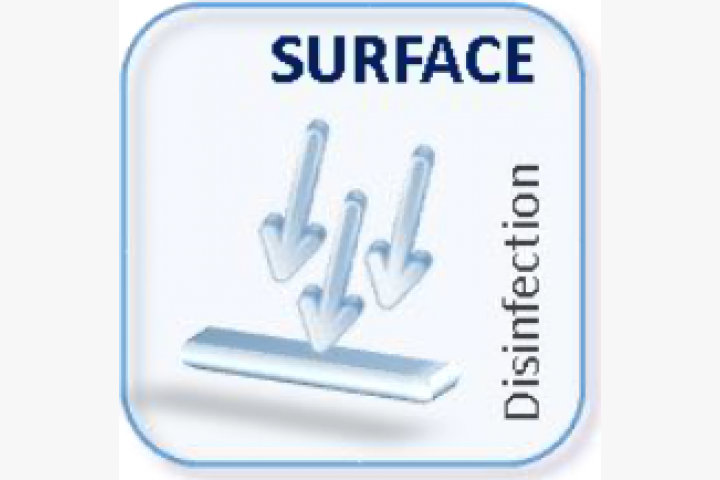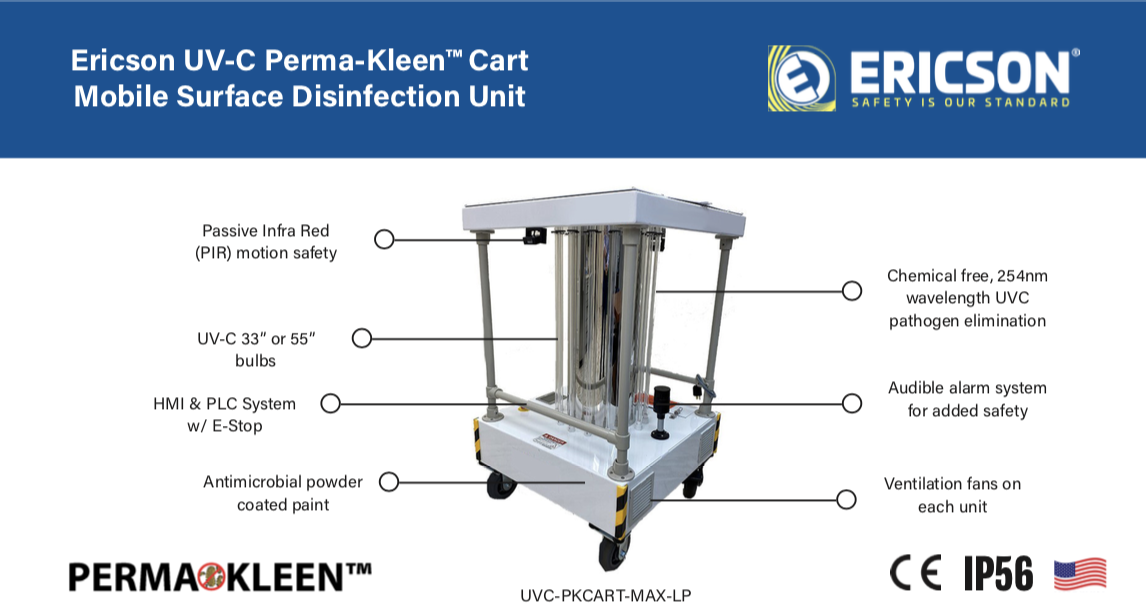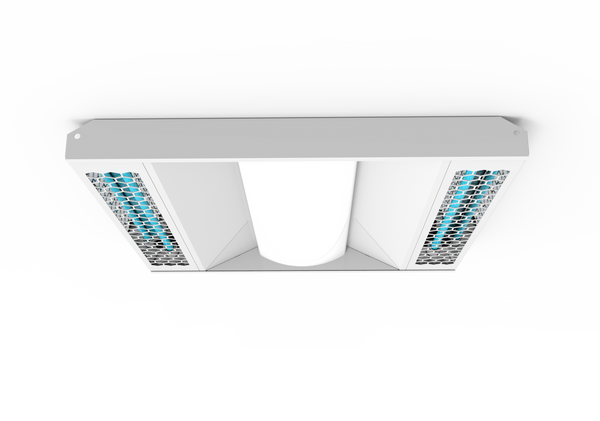Harnessing the Prospective of UV Sanitation: Shielding Health and Hygiene
As the world faces the ongoing pandemic and the consistent risk of infectious conditions, the value of preserving health and health has never ever been much more apparent. In this context, harnessing the possibility of UV disinfection arises as an appealing solution. UV sanitation, a technology extensively utilized in various sectors, has verified effective in removing dangerous pathogens. Nonetheless, there is a lot even more to check out behind the scientific research of UV disinfection and its applications. From comprehending the devices at play to implementing this modern technology in our day-to-days live, this conversation intends to shed light on the capacity of UV disinfection and its function in guarding our health and health.
Comprehending UV Sanitation
UV sanitation is a very reliable and widely used method for getting rid of unsafe pathogens and guaranteeing wellness and health. This strategy makes use of ultraviolet (UV) light to suspend microbes by harming their DNA and stopping them from duplicating. UV sanitation is specifically reliable against microorganisms, viruses, and various other microbes that can trigger infections and conditions.
The concept behind UV sanitation is basic yet effective. When UV light is emitted at a details wavelength, it passes through the microbe's cell wall surface and disrupts its genetic material. This procedure, recognized as photodissociation, leads to the formation of thymine dimers, which avoid the microorganism from reproducing and providing it harmless. UV disinfection can be applied in numerous setups, including water therapy plants, medical care facilities, food processing sectors, and air filtration systems.
One of the benefits of UV sanitation is its ability to effectively and successfully get rid of a vast array of virus without the need for chemicals or ingredients. Unlike various other disinfection techniques, such as chlorine or ozone, UV disinfection does not present damaging by-products or chemical residues right into the atmosphere. In addition, UV sanitation is a non-contact process, which suggests that it does not require physical call with the microorganisms, decreasing the danger of cross-contamination.

The Science Behind UV Sanitation
The effectiveness of UV sanitation exists in its capability to interfere with the genetic material of microbes, rendering them unable to duplicate and consequently removing their harmful potential. This high-energy UV-C radiation is most effective in disinfection applications because it can permeate the cell walls of bacteria and damage their DNA or RNA.
When bacteria are subjected to UV-C radiation, the energy is taken in by their genetic material, causing bonds to break and forming chemical reactions that disrupt their ability to recreate. This avoids the bacteria from replicating and spreading infection. UV sanitation is specifically efficient against fungi, bacteria, and infections, including common pathogens such as Escherichia coli, Salmonella, and Flu.
The scientific research behind UV sanitation is supported by comprehensive research and studies. It has been revealed that direct exposure to an adequate dose of UV-C radiation can attain a high level of disinfection, often going beyond 99.9% effectiveness in eliminating bacteria. It is important to keep in mind that the effectiveness of UV sanitation depends on various variables, including the intensity of UV-C radiation, exposure time, range from the UV source, and the sensitivity of the bacterium to UV radiation (uv surface disinfection).
Applications of UV Sanitation
Provided the considerable research study and efficacy of UV disinfection in interfering with the genetic product of microorganisms, it is very important to explore the different sensible applications of this innovation. UV sanitation has confirmed to be an important device in a variety of sectors where maintaining a secure and tidy environment is necessary.
One significant application of UV disinfection is in health care setups. UV light can be used to disinfect surfaces, tools, and even the air in health centers and medical facilities. This assists to minimize the threat of healthcare-associated infections and ensures a safer atmosphere for clients and health care employees.
An additional important application is in the food and beverage market. UV disinfection is utilized to deal with water and get rid of hazardous microorganisms, such as E. coli and Salmonella, from the manufacturing procedure. uv surface disinfection. This makes certain the safety and security and quality of the products we consume
UV disinfection is also commonly utilized in water treatment plants and wastewater treatment facilities. It is an efficient technique for ruining dangerous germs, infections, and parasites that can be existing in water resources. This assists to supply tidy and risk-free drinking water to communities and safeguard the environment from contamination.
Furthermore, UV disinfection is employed in the pharmaceutical sector to decontaminate tools and preserve the stability of products. It is also used in labs and research centers to protect against contamination and ensure exact outcomes.
Advantages of UV Disinfection Modern Technology
One notable benefit of employing UV disinfection technology is its capability to efficiently eradicate bacteria without the usage of rough chemicals. This is particularly useful in numerous settings, such as medical care centers, water treatment plants, and food processing industries, where the visibility of harmful virus presents a considerable risk to public wellness and security.
Unlike typical sanitation approaches that depend on chemicals like chlorine or ozone, UV disinfection modern technology uses ultraviolet light to target and destroy the DNA of bacteria, efficiently counteracting their capability to reproduce and trigger infections. This process not just eliminates the demand for possibly damaging chemicals however additionally minimizes the danger of chemical deposit or by-products continuing to be in the cured environment.

Moreover, UV sanitation technology is eco-friendly. As it does not count on using chemicals, it eliminates the need for their production, transportation, and disposal, decreasing the general carbon impact related to sanitation procedures. In addition, UV sanitation systems have a longer life-span contrasted to chemical-based techniques, causing much less constant replacement and more reducing waste.
Implementing UV Disinfection in Daily Life
To successfully apply UV sanitation in every day life, people and organizations can incorporate mobile UV disinfecting gadgets into their hygiene routines and cleaning practices. These tools are made to emit ultraviolet light, which has actually been verified to kill or inactivate a wide array of microbes, including infections, germs, and fungi. By using mobile UV sterilizing devices, people here can sanitize commonly touched surfaces and things, such as mobile phone, doorknobs, laptop computers, and keys, decreasing the risk of spreading out bacteria and infections.
In addition to including portable UV disinfecting devices, it is necessary to comply with appropriate guidelines and suggestions for efficient UV sanitation. This includes making sure that the device is utilized appropriately and for the suggested period to achieve optimal sanitation outcomes. It is also vital to prioritize security actions, such as wearing safety glasses and avoiding direct exposure of the UV light to the skin.

In addition, companies can carry out UV disinfection technology in numerous setups to improve hygiene techniques. For circumstances, healthcare facilities and healthcare facilities can make use of UV disinfection robots to disinfect individual rooms, running movie theaters, and other high-touch locations. Food handling markets can incorporate UV sanitation systems right into their assembly line to enhance food safety and security and stop contamination.
Conclusion
In conclusion, UV disinfection innovation holds great prospective in protecting wellness and health. With its countless benefits, UV sanitation is a beneficial tool for preserving a clean and healthy and balanced environment.
Unlike other disinfection techniques, such as chlorine or ozone, UV sanitation does not present harmful by-products or chemical residues into the atmosphere. It is crucial to keep in mind that the performance of UV disinfection depends on various elements, including the index intensity of UV-C radiation, exposure time, distance from the UV source, and the vulnerability of the bacterium to UV radiation.
One more advantage of UV disinfection innovation is its capability to supply fast and constant sanitation. Unlike handbook cleaning methods, which can be time-consuming and require significant labor, UV disinfection systems can be automated and run continually, ensuring regular sanitation without human treatment.To properly apply UV sanitation in everyday life, individuals and organizations can integrate portable UV disinfecting tools right into image source their hygiene routines and cleansing techniques.